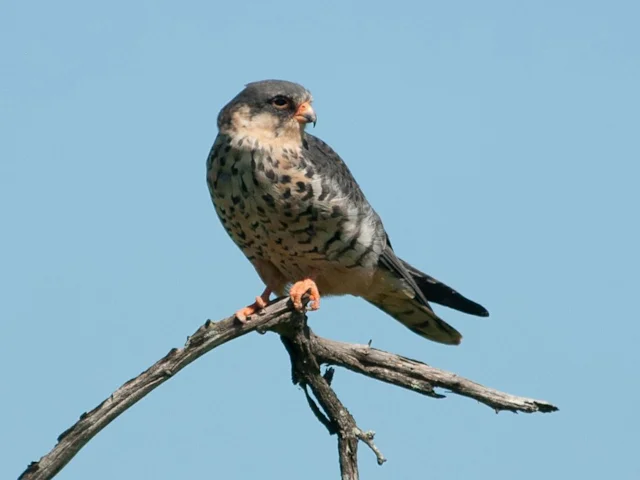India to help conserve raptors
da7ba73d-2498-46ee-b719-f4b8807a9d3a

India has become the 54th country to sign an important international agreement to protect migratory birds of prey.
Approval to sign the Memorandum of Understanding on the Conservation of Migratory Birds of Prey in Africa and Eurasia (Raptors MOU) was given by Indian Prime Minister Narendra Modi in a Cabinet meeting held on 30 December 2015. Although legally non-binding, the Raptors MOU is an important tool to help the conservation of birds of prey.
“It gives us immense pleasure to congratulate the Prime Minister and Government for making India the 54th signatory to the Raptors MOU. This agreement is a big step forward for the monitoring, research and conservation of migratory species of raptors. We will be honoured if we can assist the Government in meeting India’s obligations under the treaty,” said Deepak Apte, Director of the Bombay Natural History Society (BNHS, BirdLife in India).
Established in 1883, BNHS is among the oldest conservation organisations in the world, and over the course of its long history has carried out pioneering research and conservation on many birds of prey including South Asia’s critically endangered vultures and migratory species such as Amur Falcon.
Although the migratory status of Asia’s vultures is in most cases ambiguous, they are in the process of being included in the Raptors MOU, which was concluded under the United Nations Environment Programme’s (UNEP) Convention on Migratory Species (CMS).
In November 2012, the CMS adopted a resolution which for the first time set out a global agenda for conservation along fly-ways – well-travelled routes used by birds during migration, which often span continents and oceans. BirdLife also ensured effective resolutions were agreed on a number of key issues affecting raptors, including agricultural chemicals, power lines and renewable energy.
BirdLife provided much of the scientific information underpinning the Raptors MOU, which develops guidelines for national strategies for bird of prey conservation, and is working especially closely with the BirdLife’s Migratory Soaring Birds Project.
Approval to sign the Memorandum of Understanding on the Conservation of Migratory Birds of Prey in Africa and Eurasia (Raptors MOU) was given by Indian Prime Minister Narendra Modi in a Cabinet meeting held on 30 December 2015. Although legally non-binding, the Raptors MOU is an important tool to help the conservation of birds of prey.
“It gives us immense pleasure to congratulate the Prime Minister and Government for making India the 54th signatory to the Raptors MOU. This agreement is a big step forward for the monitoring, research and conservation of migratory species of raptors. We will be honoured if we can assist the Government in meeting India’s obligations under the treaty,” said Deepak Apte, Director of the Bombay Natural History Society (BNHS, BirdLife in India).
Established in 1883, BNHS is among the oldest conservation organisations in the world, and over the course of its long history has carried out pioneering research and conservation on many birds of prey including South Asia’s critically endangered vultures and migratory species such as Amur Falcon.
Although the migratory status of Asia’s vultures is in most cases ambiguous, they are in the process of being included in the Raptors MOU, which was concluded under the United Nations Environment Programme’s (UNEP) Convention on Migratory Species (CMS).
In November 2012, the CMS adopted a resolution which for the first time set out a global agenda for conservation along fly-ways – well-travelled routes used by birds during migration, which often span continents and oceans. BirdLife also ensured effective resolutions were agreed on a number of key issues affecting raptors, including agricultural chemicals, power lines and renewable energy.
BirdLife provided much of the scientific information underpinning the Raptors MOU, which develops guidelines for national strategies for bird of prey conservation, and is working especially closely with the BirdLife’s Migratory Soaring Birds Project.

